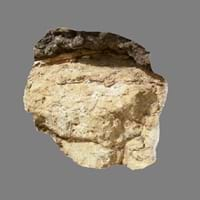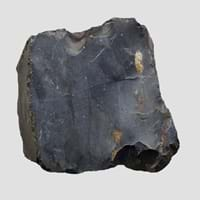Definition
Laterite rock is a type of Sedimentary rock which is rich in iron and aluminium, formed in hot and wet tropical areas
Chert is a hard, dark, opaque sedimentary rock which is composed of silica with an amorphous fine-grained texture
Discoverer
Francis Buchanan-Hamilton
Unknown
Etymology
From Latin later brick, tile + -ite1
From flint-like quartz, 1670s, of unknown origin- a local term, which has been taken into geological use
Class
Sedimentary Rocks
Sedimentary Rocks
Sub-Class
Durable Rock, Soft Rock
Durable Rock, Hard Rock
Group
Not Applicable
Not Applicable
Other Categories
Fine Grained Rock, Opaque Rock
Fine Grained Rock, Opaque Rock
Texture
Earthy, Massive, Porphyritic
Banded, Rough
Color
Brown, Buff, Red
Black, Brown, Green, Grey, Red, White
Durability
Durable
Durable
Appearance
Rough and Banded
Glassy or Pearly
Interior Uses
Decorative Aggregates, Flooring, Interior Decoration
Decorative Aggregates, Homes
Exterior Uses
As Building Stone, As Facing Stone, Garden Decoration
As Building Stone, As Facing Stone, Garden Decoration, Office Buildings
Other Architectural Uses
Curbing
Curbing
Construction Industry
Cobblestones, for Road Aggregate, Landscaping, Roadstone
Arrowheads, Construction Aggregate, Cutting Tool, Spear Points
Medical Industry
Not Yet Used
Not Yet Used
Antiquity Uses
Artifacts, Monuments, Sculpture
Artifacts, Monuments
Commercial Uses
An Oil and Gas Reservoir, Source of bauxite, Used in aquariums
Creating Artwork, Gemstone, In fire-starting tools, Jewelry, To ignite fire, Used in flintlock firearms
Types
Not Available
Flint, Jasper, Radiolarite, Common Chert, Chalcedony, Agate, Onyx, Opal, Magadi-type Chert, Porcelanite, Siliceous Sinter
Features
Is one of the oldest rock, Very fine grained rock
Clasts are smooth to touch, Easily splits into thin plates, Has High structural resistance against erosion and climate
Archaeological Significance
Famous Monuments
Data Not Available
Data Not Available
Sculpture
Used
Not Yet Used
Famous Sculptures
Data Not Available
Not Applicable
Pictographs
Used
Not Used
Petroglyphs
Used
Not Used
Figurines
Used
Not Yet Used
Formation
Laterite is a type of sedimentary rock which is generally a reddish weathering product of basalt.
Chert forms when microcrystals of silicon dioxide grow within soft sediments that become limestone or chalk. The chert formation can be either of chemical or biological origin.
Mineral Content
Aluminum Oxides, Biotite, Hematite, Hornblade, Iron Oxides, Manganese Oxides, Micas, Muscovite or Illite, Plagioclase, Pyroxene
Quartz, Silicon
Compound Content
Aluminium Oxide, CaO, Iron(III) Oxide, FeO, Potassium Oxide, MgO, MnO, Sodium Oxide, Phosphorus Pentoxide, Silicon Dioxide, Titanium Dioxide
Silicon Dioxide
Types of Metamorphism
Not Applicable
Not Applicable
Types of Weathering
Biological Weathering, Chemical Weathering
Not Applicable
Types of Erosion
Chemical Erosion, Water Erosion, Wind Erosion
Chemical Erosion
Grain Size
Fine Grained
Very fine-grained
Fracture
Conchoidal
Uneven, Splintery or Conchoidal
Porosity
Highly Porous
Highly Porous
Luster
Dull
Waxy and Dull
Compressive Strength
Not Available
Cleavage
Not Applicable
Non-Existent
Toughness
Not Available
1.5
Specific Gravity
Not Available
2.5-2.8
Transparency
Opaque
Translucent to Opaque
Density
Not Available
2.7 g/cm3
Specific Heat Capacity
Not Available
Resistance
Heat Resistant, Pressure Resistant
Heat Resistant, Impact Resistant, Pressure Resistant, Wear Resistant
Deposits in Eastern Continents
Asia
India
China, India, Iran, Japan, Oman, Russia, Saudi Arabia, Taiwan, Thailand, Vietnam
Africa
East Africa, Western Africa
Kenya, Morocco, South Africa, Tanzania
Europe
England, Romania, Scotland
Austria, France, Greece, Italy, Malta, Poland, Portugal, Serbia, Spain, Sweden, United Kingdom
Others
Not Yet Found
Greenland, Mid-Atlantic Ridge
Deposits in Western Continents
North America
Canada, USA
Canada, Mexico, USA
South America
Not Yet Found
Bolivia, Brazil
Deposits in Oceania Continent
Australia
Central Australia, Western Australia
New South Wales, Queensland, South Australia, Western Australia
All about Laterite and Chert Properties
Know all about Laterite and Chert properties here. All properties of rocks are important as they define the type of rock and its application. Laterite and Chert belong to Sedimentary Rocks.Texture of Laterite is Earthy, Massive, Porphyritic whereas that of Chert is Banded, Rough. Laterite appears Rough and Banded and Chert appears Glassy or Pearly. The luster of Laterite is dull while that of Chert is waxy and dull. Laterite is available in brown, buff, red colors whereas Chert is available in black, brown, green, grey, red, white colors. The commercial uses of Laterite are an oil and gas reservoir, source of bauxite, used in aquariums and that of Chert are creating artwork, gemstone, in fire-starting tools, jewelry, to ignite fire, used in flintlock firearms.










